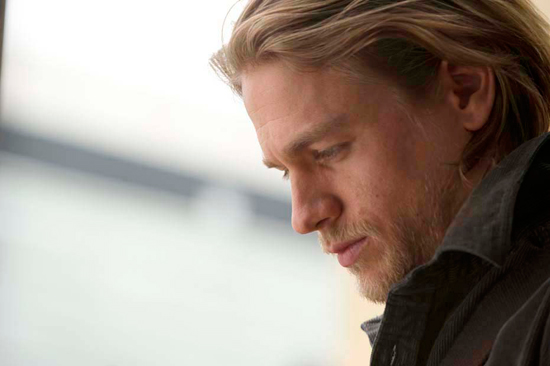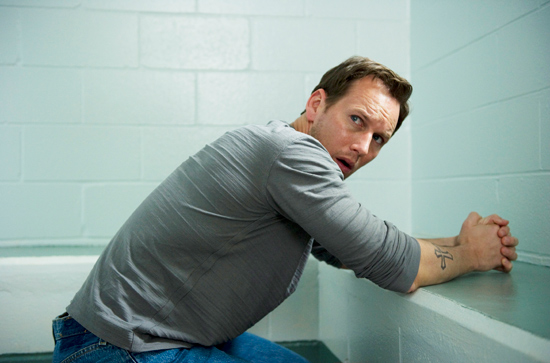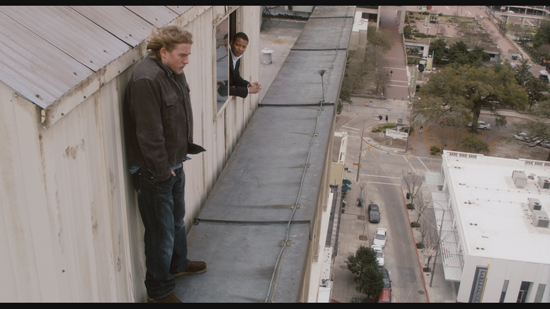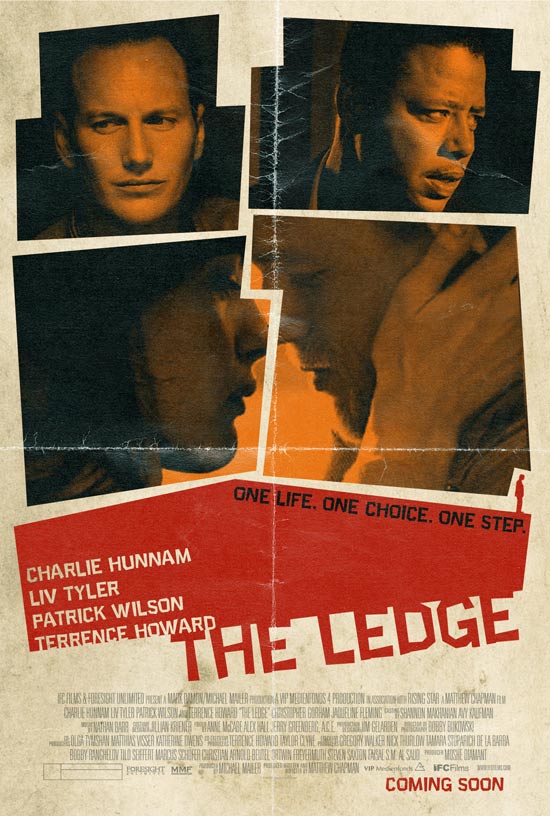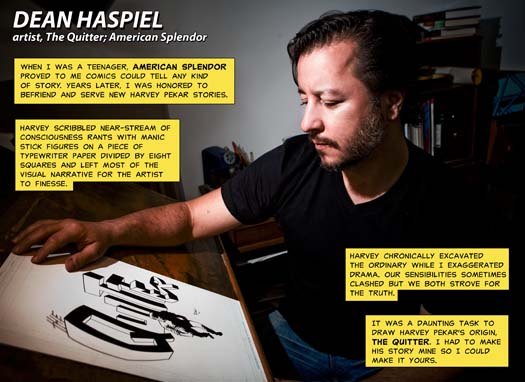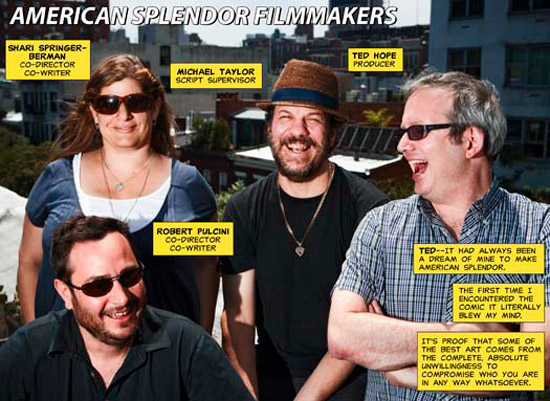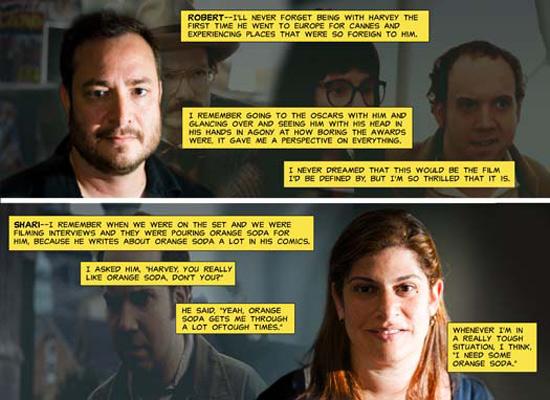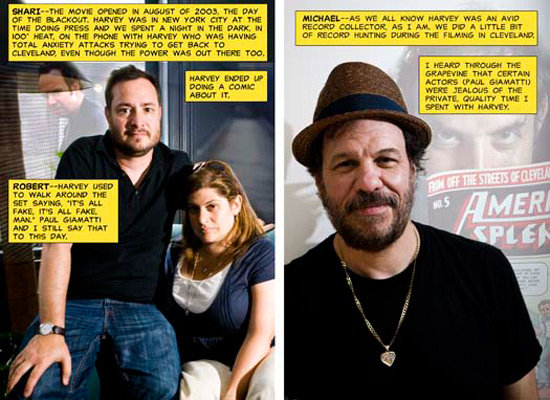Posts about how to use crowdfunding effectively have become a bit of mainstay in the indie film blogosphere. But that doesn’t make them any less crucial. Crowdfunding has become the most-talked about new tool in a filmmaker’s arsenal for getting your movie financed. It’s an intimidating commitment, particularly if you want to do it well. Luckily we all have a community to turn to, a community that has been very generous with their shared knowledge. Joke and Biagio, a husband & wife filmmaking team, collected their favorite & most helpful crowdfunding posts recently — and having included a post from this site SPRANG to my attention. They not only found posts that were useful, but also were then able to recognize what was missing. Today they guest post and fill in one of those gaps: the emotional connection between your crowdfunding campaign and your audience. Thanks guys!
The internet’s a crowded place. Everyone’s promoting something. A product, a cause, a film…
Make your movie stand out from the crowd by connecting with people on an emotional level.
How the Heck Do I Do That?
Below are some best-guess tips from our experience making and promoting Dying to do Letterman, our feature documentary which will qualify for Academy Award® consideration at DocuWeeks™ 2011.
So far, the audience response has been emotional — and beyond our wildest dreams.
In looking back, here’s what we’ve learned.
1. Start With a Project that Makes You Emotional.
Oodles of filmmakers miss the mark on this point.
If the mere thought of the film you’re planning doesn’t make you laugh out loud, bring tears to your eyes, keep you up late at night and bounce you out of bed early in the morning, make another movie that does.
You’ll never move an audience if the project doesn’t move you.
2. Connect To Others With Your Film’s “Story”
We’re not talking about “plot” or “script” here.
What’s the story of your film?
Why are you making it?
What extraordinary circumstances in your own life gave you no choice BUT to make this movie?
From the dawn of time great stories have bonded people, creating a shared human experience. Today those stories are told around campfires, water coolers, and dinner tables.
No one’s going to retell your elevator pitch to their friends, but they will relate an amazing story about a filmmaker they met.
When it came to our story, we were “lucky” (as filmmakers, anyway) to have an emotional behind-the-scenes story.
Before sharing this example, we acknowledge you might not have such built-in emotional circumstances. That’s okay. Find your story that connects with people on a gut level–a story they want to retell to others–whether funny, horrific, inspiring, or unbelievable.
Ours went something like this:
“One of our best friends is a stand-up comedian and he’s always wanted to perform on Letterman. We just found out he has cancer and might only have five years to live. When we called to see if we could help in any way, he told us he’s dedicating what’s left of life to chasing his dream, and asked us to film it. It was a hard decision, but we’re throwing in our life savings and seeing the movie through to the end.”
That story moved us. It moved the people we told. They told others.
Find your story.
3. “Social” without the “media” part…
Social media will be a huge part of promoting your film, but nothing can recreate the emotional connection made between two real people.
In person.
No computer in the middle.
Find any excuse to personally introduce yourself to your potential audience.
In our case, during the filming of the documentary, we went out of our way to shake every person’s hand, learn their name, and thank them for their involvement…even if they were just casual passers-by.
At every film festival screening we walk through the line before the film starts, introduce ourselves as the filmmakers, and sincerely thank people for coming to our movie.
We now know many of them by name, and they actively keep in touch on Facebook and Twitter, as well as our blog and the official site — the perfect time for “social media” to step in and help out.
4. Share Your Emotions On Video
Allow your potential audience access to your life by posting regular video updates on your filmmaking journey. (This is something we started far too late.)
Be real. No one wants to support a “too cool for school” filmmaker. People support those they can relate to. Show you’re as vulnerable as the people you’re reaching out to every day (as long as you’re genuine.)
It’s probably no coincidence that the day this video went up we raised about $10,000 for our Kickstarter campaign. We almost didn’t put it up because it was a little embarrassing.
Clearly, that would’ve been a costly mistake.
5. Swag vs Mementos
me·men·to/məˈmenˌtō/
Noun: An object kept as a reminder or souvenir of a person, place or event.
swag /swag/
Noun: Not a memento.
How many film festivals have you been to where you’ve been hit with buttons, mugs, pens, tee-shirts–you name it?
Some swag is clever. Some isn’t. Most you’d never give a second thought.
Rather than spend big money on swag, spend mucho time coming up with a creative, inexpensive item your potential audience might actually hold on to — even cherish — in the years to come.
It’s not easy.
In our case, after weeks of brainstorming, Steve Mazan (subject of Dying to do Letterman) said, “You know, I was dying to do Letterman, I wonder what everyone else is dying to do?”
He then came up with our “I’m Dying To…” buttons.
They’re blank in the middle, and Steve personally writes people’s dreams on them with a sharpie. We street team days before the movie plays (and by we, we mean the two of us, Steve, and whoever else we can con into it) and give people their “dream buttons” along with a flyer listing our screening times.
People wear the buttons, strike up conversations with complete strangers about their buttons, all the while connecting their own dreams back to our movie.
We credit those buttons with our numerous sell out crowds, standing ovations, and a more amazing launch to our Kickstarter campaignWe’re Not Psychologists
We’re just indie filmmakers who want others to be as passionate about our movie as we are every day.
Over the years we’ve been lucky to work on many different types of film and TV projects, but we’ve never had such enthusiastic audience response and participation until now.
The difference?
People are connecting to our film emotionally.
Work hard to achieve that, and your film may be one of the lucky ones that breaks out.
We’re hoping Dying to do Letterman proves to be one of those films.
We get emotional just thinking about it.
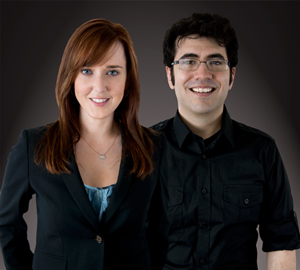
About Joke and Biagio:
Wife and husband team Joke and Biagio are best known in the unscripted world for executive producing “Scream Queens” on VH1, “Commercial Kings with Rhett and Link” on IFC (currently airing Friday Nights at 10pm/9 central) and the upcoming documentary series “Caged” on MTV. Other credits include “Beauty and the Geek” and “Oh Baby, Now What?” The duo earned their documentary wings under acclaimed filmmaker R.J. Cutler (“The War Room,” “The September Issue”) and honed their reality TV skills working with luminaries like Mark Burnett. Their company, Joke Productions, Inc., is growing fast. They blog and tweet about making film and TV at www.jokeandbiagio.com and @JokeAndBiagio.
About Steve Mazan:
In the decade since starting in the great San Francisco comedy scene, Steve Mazan has played clubs, colleges and corporate events across America. In addition, to reaching his dream of performing on David Letterman’s show, he’s been a repeat guest on Craig Ferguson, Byron Allen and the Bob & Tom Show.
But of all the shows Steve has done, he remains most proud of the many trips he’s made to the Mid-East to perform for our troops. As a former Navy Submariner, Steve knows how much those men and women sacrifice for our country, and how much they need our support, and someone to laugh at.


